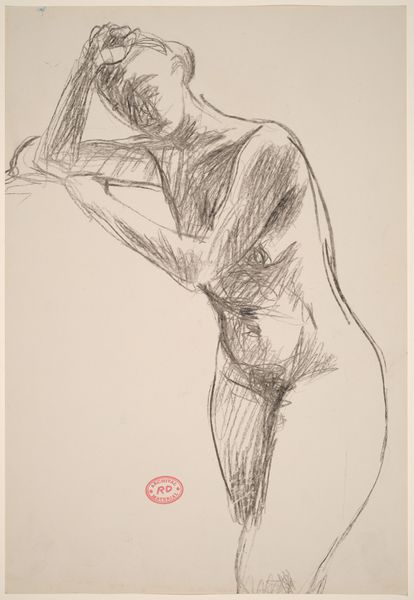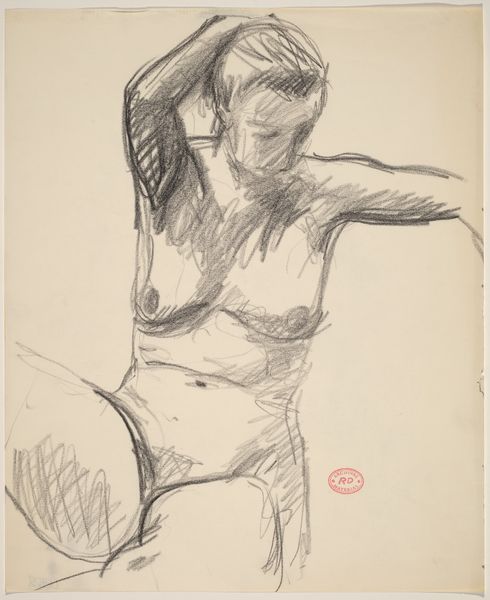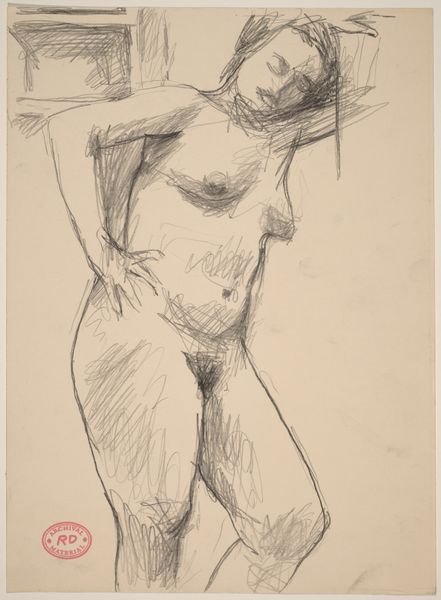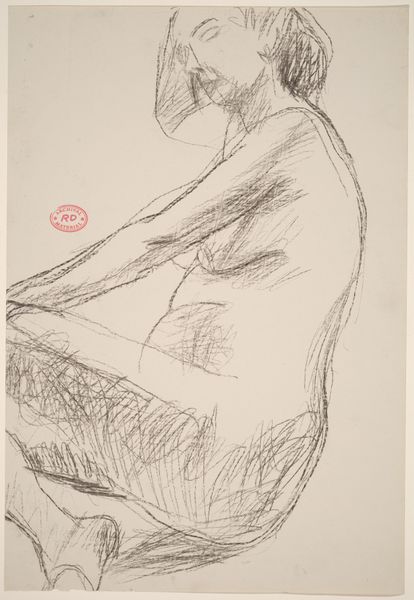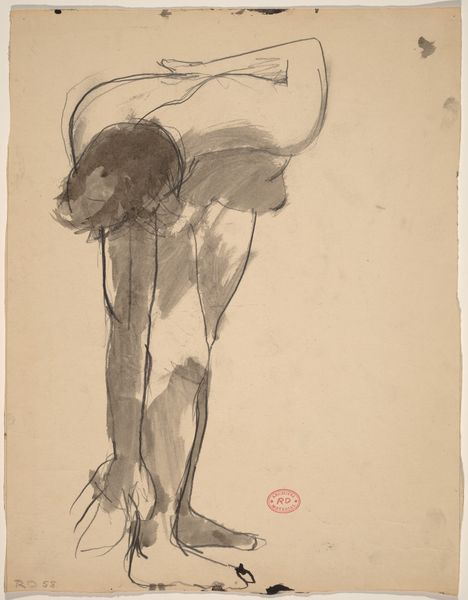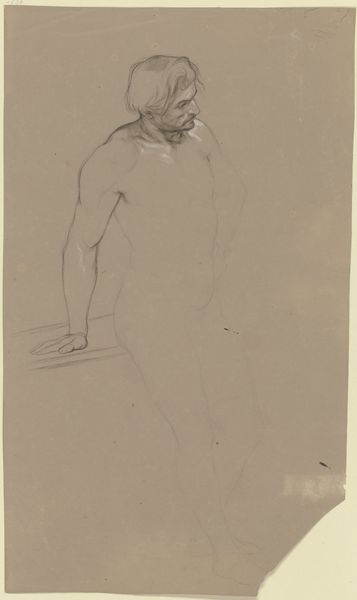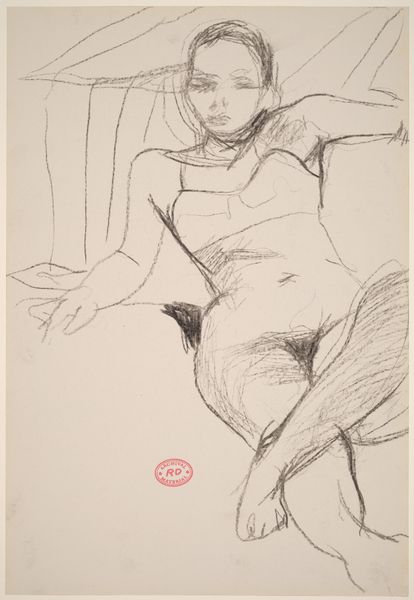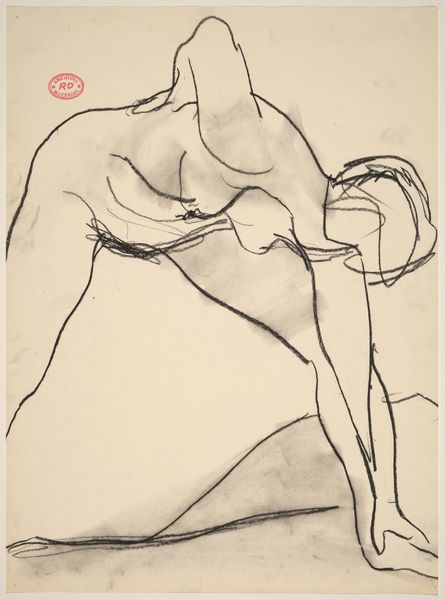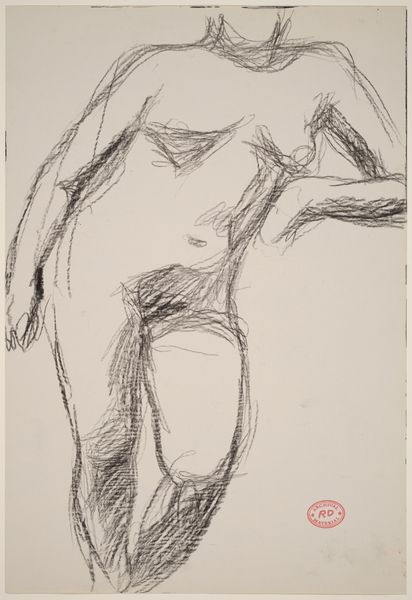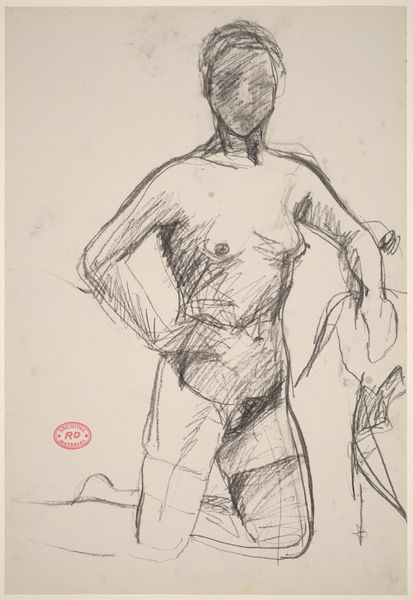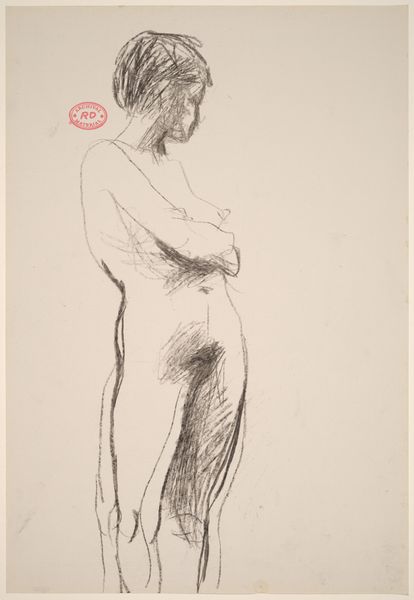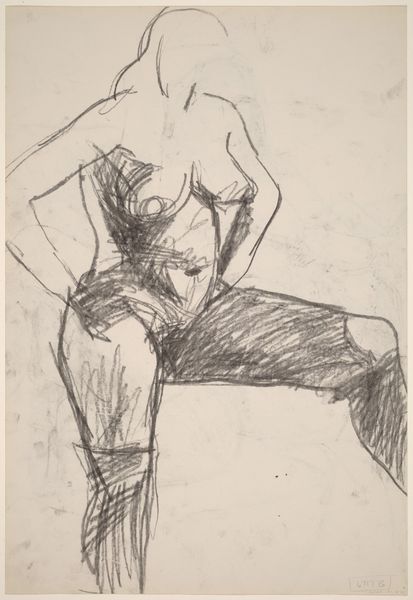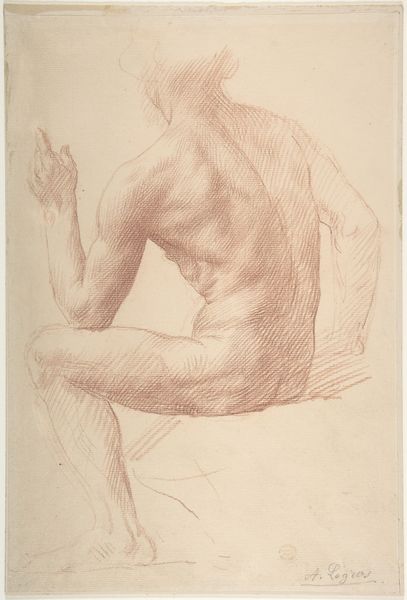![Untitled [nude placing her hands behind her head] by Richard Diebenkorn](/_next/image?url=https%3A%2F%2Fd2w8kbdekdi1gv.cloudfront.net%2FeyJidWNrZXQiOiAiYXJ0ZXJhLWltYWdlcy1idWNrZXQiLCAia2V5IjogImFydHdvcmtzLzIxNjQ1M2VmLTczMjItNGE5OS1iN2MyLTExMjQxOTRkYzBjZS8yMTY0NTNlZi03MzIyLTRhOTktYjdjMi0xMTI0MTk0ZGMwY2VfZnVsbC5qcGciLCAiZWRpdHMiOiB7InJlc2l6ZSI6IHsid2lkdGgiOiAxOTIwLCAiaGVpZ2h0IjogMTkyMCwgImZpdCI6ICJpbnNpZGUifX19&w=3840&q=75)
Untitled [nude placing her hands behind her head] 1955 - 1967
0:00
0:00
drawing, pencil
#
portrait
#
drawing
#
figuration
#
bay-area-figurative-movement
#
pencil
#
pencil work
#
nude
Dimensions: overall: 22.5 x 30.5 cm (8 7/8 x 12 in.)
Copyright: National Gallery of Art: CC0 1.0
Curator: Before us is Richard Diebenkorn’s “Untitled [nude placing her hands behind her head],” a pencil drawing dating between 1955 and 1967. Editor: The raw simplicity is striking. It's a very immediate work. You can almost feel the movement of the artist's hand across the page, the weight of the pencil, the texture of the paper. Curator: Yes, the quick strokes certainly capture a sense of spontaneity. Diebenkorn was deeply engaged with representing the human form, a common theme throughout art history, but here, he seems to strip it back to its essence. It’s also important to place Diebenkorn within the California art scene, where figuration was making a comeback. Editor: What fascinates me is the focus on the physical act of drawing itself. The network of lines, the varied pressure of the pencil, almost more important than rendering a perfect likeness. It begs the question: What pencil was he using, how worn was the point? Curator: Those nuances certainly contribute to its impact. There’s also something about the way the figure is positioned that speaks to post-war anxieties about identity and self-presentation, the awkward gesture maybe concealing vulnerability? Editor: Perhaps, but also the physical constraints the paper placed on Diebenkorn to construct the image. Did this constraint liberate him, I wonder? Or did it result in a certain tension in the graphite line? It reminds me of that shift away from mass-produced materials during that period, and a return to more handcrafted items. Curator: A compelling interpretation. It makes me think of how Abstract Expressionism opened doors for exploring gesture and line. So by placing this figure within that lineage, it transcends mere representation. It enters a conversation about art's function in society. Editor: I’m not sure I would put that much emphasis on the “society,” aspect. What grabs me the most is the immediate physical impression this image imparts. Diebenkorn’s piece serves as a reminder that even a simple drawing embodies the artist's labour and the nature of materials, something we tend to forget. Curator: Agreed. Looking again, I realize this image functions beyond merely representing a nude, and in fact stands as a cultural document from a particularly transitional time for the human body within the context of fine art. Editor: Absolutely, and looking closer, each mark signifies a material choice, and each represents a tiny, almost insignificant expenditure of energy that all accumulates to this finished, remarkable work.
Comments
No comments
Be the first to comment and join the conversation on the ultimate creative platform.
